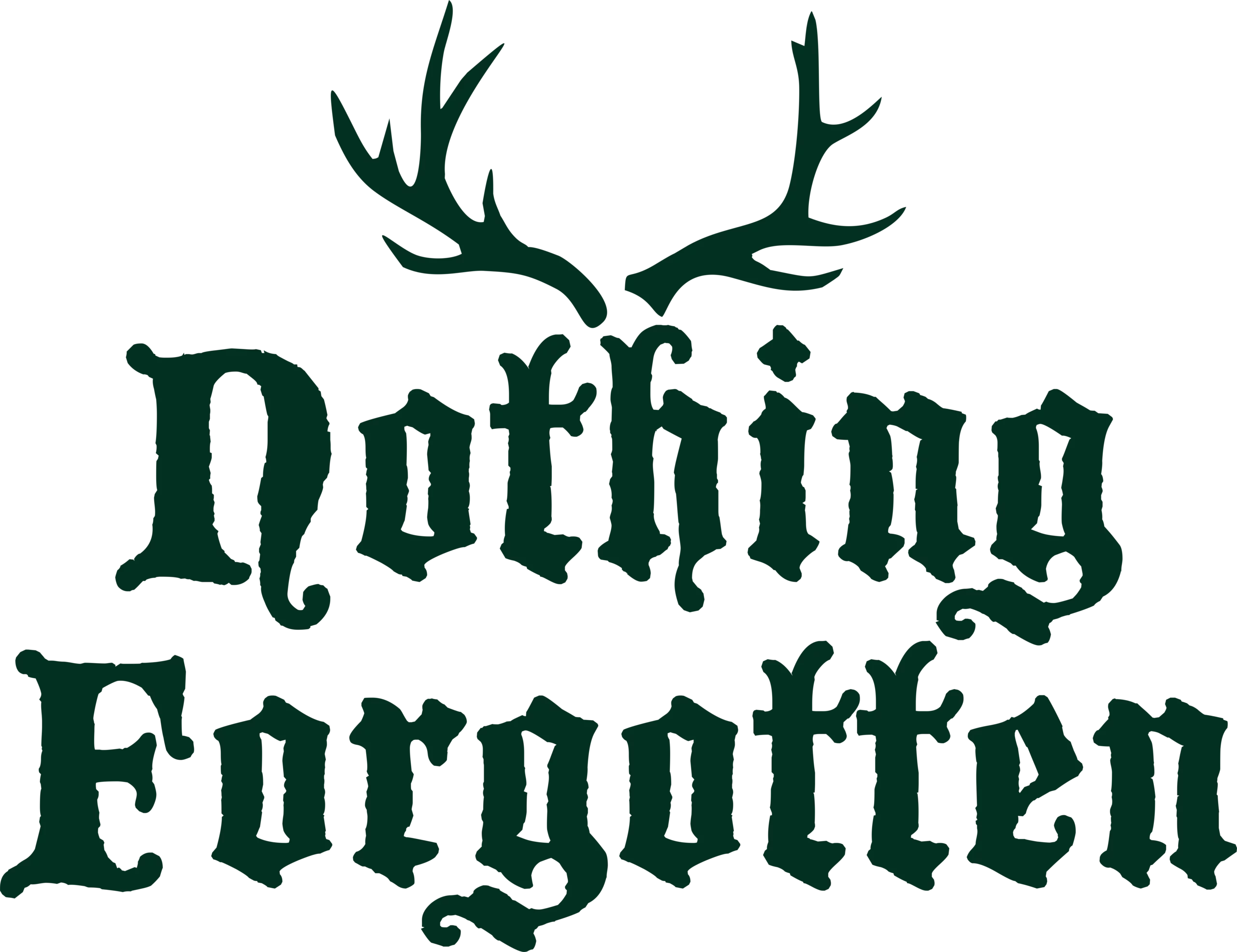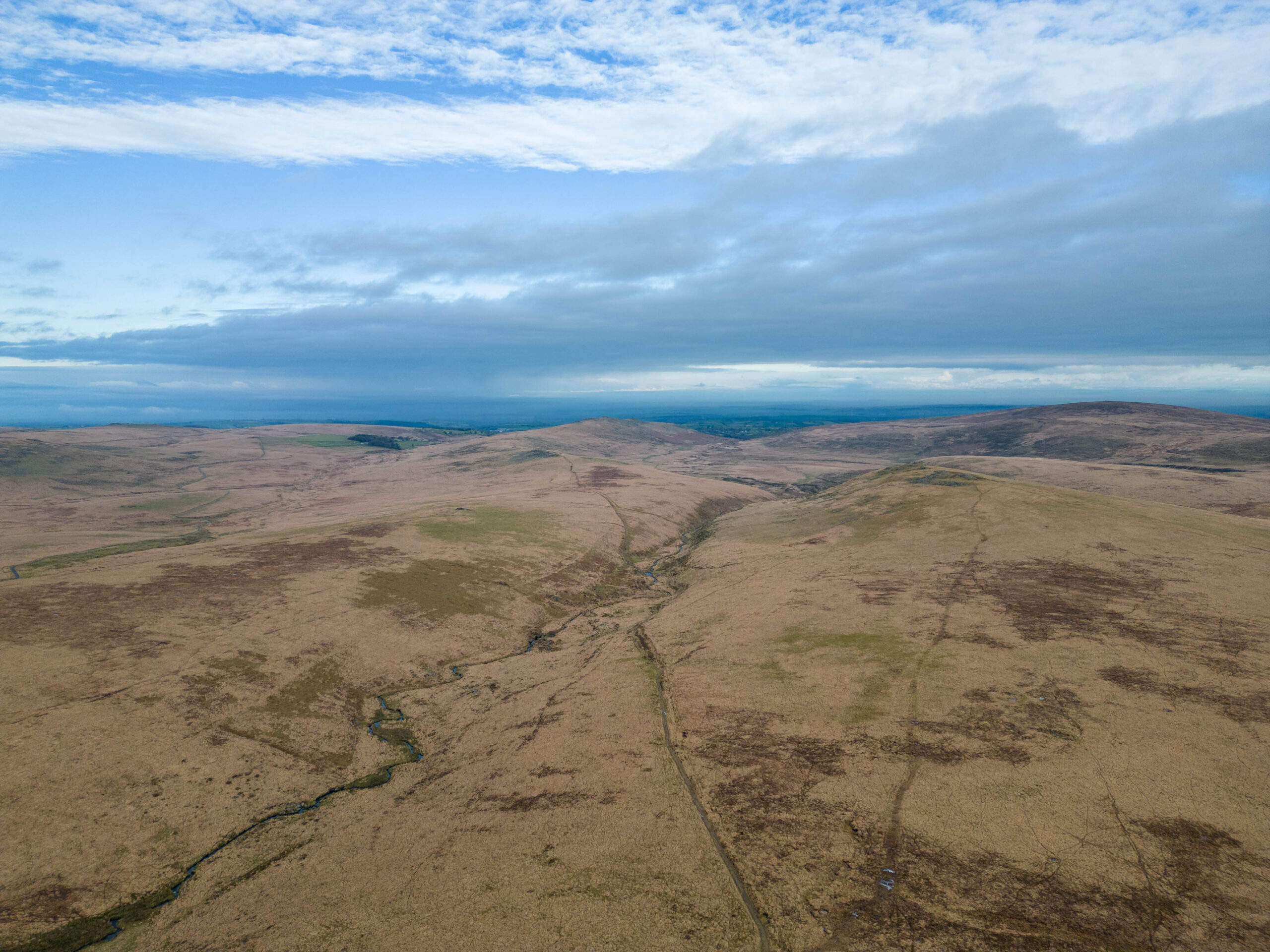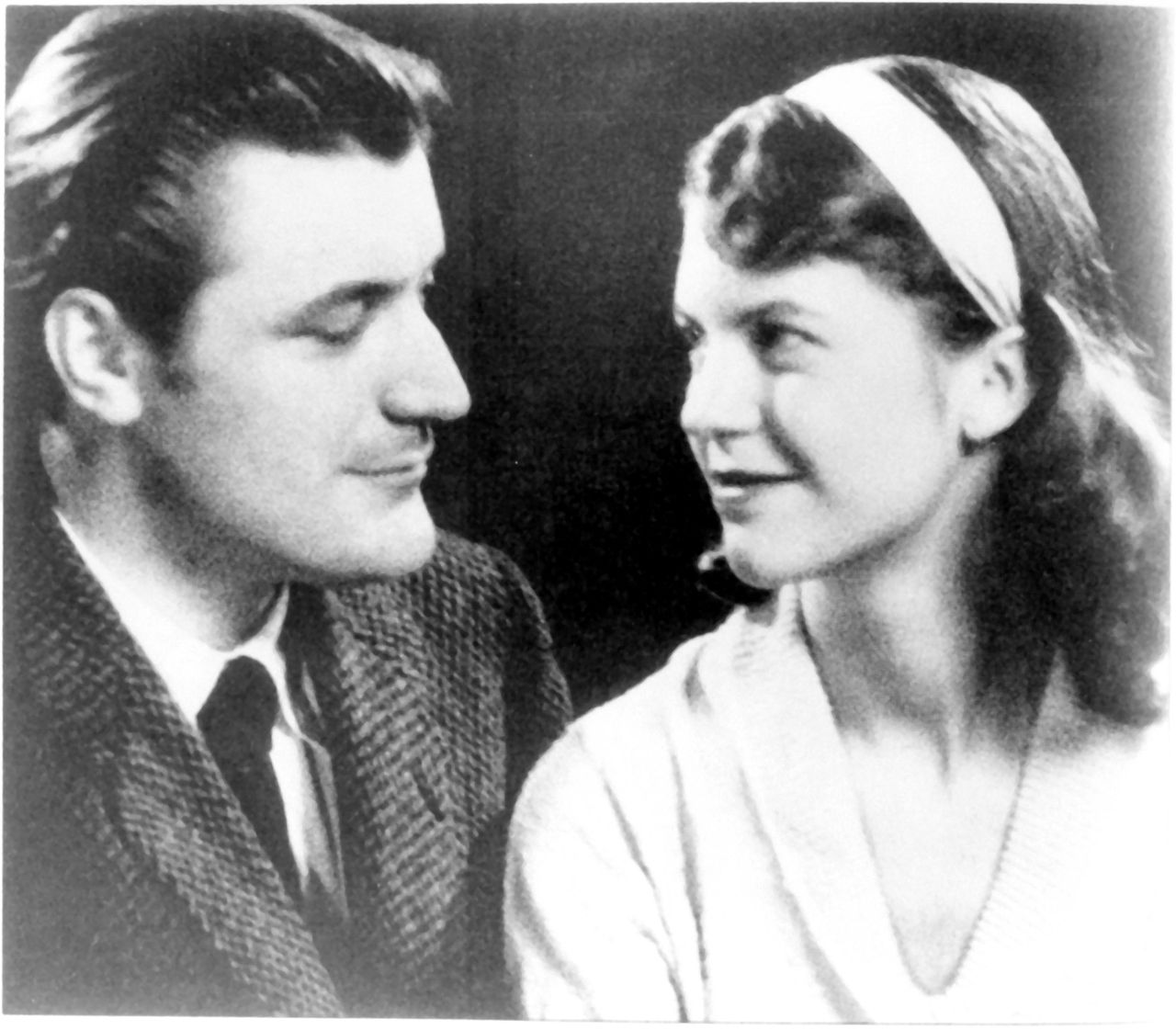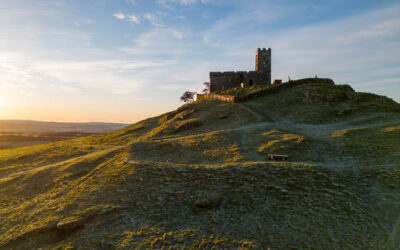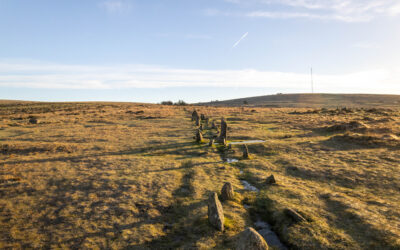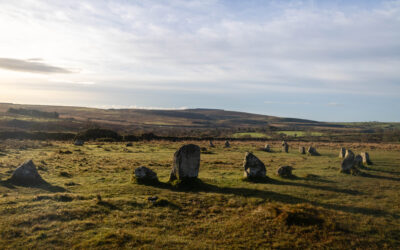Ted Hughes Memorial
Dartmoor
North of Plymouth sits Dartmoor, a 900 square kilometre plug of granite topped with spongy moorland grasses and rocky outcrops known as “tors”.
It is the source of West Devon’s major rivers, and its outer fringes are a magnet for tourists and walkers, while its interior retains an air of lonely and often foggy mystery. This is where Sherlock Holmes encountered the spectral Hound of the Baskervilles. On a grey winter day it is a bleak and lonely place to be.
While it is now a National Park and largely empty, it was – back in prehistory – much more heavily populated. Signs of Neolithic life abound in the park: mysterious stone rows and circles (among the largest and best preserved in Europe) and – best visible from the air – the outlines of ancient villages, long since overgrown.
For me, it is the site of childhood memories. My father brought me here on Sunday mornings with our dog, and I would pelt around among the granite lumps and occasional stunted tree. In my mind’s eye I was Tolkien’s Aragorn, tracking the paths of fantastical beasts, or Robin Hood, laying an ambush for the servants of injustice.
Something about the place reeks of myth and old stories. Perhaps this was its attraction also to Ted Hughes, one of England’s most celebrated, if controversial, 20th century writers.
Sylvia Plath
Ted Hughes was one of the hero figures in post-war British poetry. TS Eliot himself published and championed Hughes’ first collection, The Hawk in the Rain. Hughes and his wife Sylvia Plath were as much of a celebrity couple as two poets could be in the early 1960s.
By the end of that decade, though, Plath had committed suicide and Hughes’ subsequent partner Alicia Wevill had also killed herself, along with her and Hughes’ daughter, Shura. Hughes was a target for the feminist movement, who saw him as the culprit behind the deaths of both women, who had both been jealous of his infidelities. For his part, Hughes kept silent on his version of events until close to his death.
Hughes and Plath, then Wevill, lived in a house in North Tawton on Dartmoor. Plath’s poem, The Moon and the Yew Tree, refers to the tree which still lives in the churchyard opposite their old house. Hughes’ funeral was held in the same church. His collection Moortown is a sometimes brutal account of his time spent farming sheep and cattle on the hillsides surrounding the village.
River Taw
He spent much of his time walking and fishing the River Taw, which emerges nearby. The Taw was something of a sacred river to Hughes: he had first learned of it as a child in Yorkshire through the tales of Tarka the Otter, a work that had a significant influence on him, and he lived close to and fished the river for much of his life.
In his will, Hughes asked for his ashes to be scattered near the source of the Taw. He also requested a simple stone marker be placed there.
As it turned out, this was to be his final controversy: being a National Park, it is not possible to place memorials on the moor. It required the personal intervention of Prince Charles (whose Duchy of Cornwall technically owns the land) and three years of bureaucracy before the stone could be placed. There were fears that it would become a shrine for pilgrims, whose boots would damage the delicate ecosystems, or else a target for angry feminists still outraged at his role in Sylvia Plath’s unhappy end. As such, its location was kept a secret, but was soon stumbled upon by a walker and its location leaked to the internet. You can find the map coordinates without difficulty if you want to, but out of respect to these wishes I won’t share them myself.

Out of respect to Hughes the man, I wanted to see for myself the place chosen to remember him. I set out from Belstone, a pretty village near Okehampton, up a steep hill and through a metal gate onto the moor. Tracks here lead off in all directions across open, hilly, grassland surrounded by a ring of granite tors. A recent cold spell has frozen the puddles of water in the sodden ground. I take a path that heads across a number of tors with names redolent of the history of the place: Winter Tor, Scarey Tor, Oke Tor. A tractor engine chugs, somewhere out of sight. A group of teenagers wearing backpacks pass the other way, perhaps practising for next year’s Ten Tors expedition. Ted Hughes would probably approve: one way for the city-dwellers to get a tiny slice of “real” life.
Ted Hughes – Shaman
Animals feature heavily in Hughes’ work. His first collection contained one of his most famous poems – found in many children’s anthologies – The Thought Fox. It describes the process of writing a poem, coaxing it gently from the unconscious, in the metaphorical form of a fox. The beast emerges first as nothing more than a nose “touch(ing) twig and leaf”, before leaping fully-formed into the writer’s head with the “sharp, hot stink of fox”.
Children read it to consider the metaphor, but for Hughes it was more than just word play. Foxes, like many other creatures of the British landscape, figure heavily in his work and in his imagination. Hughes left his study of English at Oxford following a visitation from an apparition in a dream: half-man, half-fox, the creature walked into his student bedroom badly burned and emaciated. It placed a bloody handprint on the essay Hughes was struggling to write. “Stop this”, it told him. “You are killing us”.
Hughes took the advice to heart and switched to the study of anthropology, from which he took an awareness of the power of myth to animate human activity. He read Mircea Eliade’s studies on the commonalities between religions. He read Carl Jung and his deep dives into the darkness of Man’s psyche.
Much of his career can be seen in the terms that Jung and Eliade wrote about: symbol and significance. How much he consciously lived up to and inhabited the archetypes is hard to say: certainly he saw the work of a poet and the work of a shaman as being linked. The fox was the spirit animal that mediated between Hughes the man of 20th Century Britain and another world, inhabited by the spirits and forms of the landscape and of deep time.
Fellow poet Simon Armitage recalls a story Hughes used to tell of burying the body of a fox he had discovered as a child and, as he was digging the hole, coming across a carved ivory image of a fox, which he took and kept in exchange: Mother Earth reciprocating the act of respect. Armitage says that on his visits to Hughes’ house in Devon he was partly tempted to ask to see the ivory fox, but never dared to do so. Not because Hughes might have been taking poetic licence in his version of events, but out of a preternatural fear that the story might literally be true.
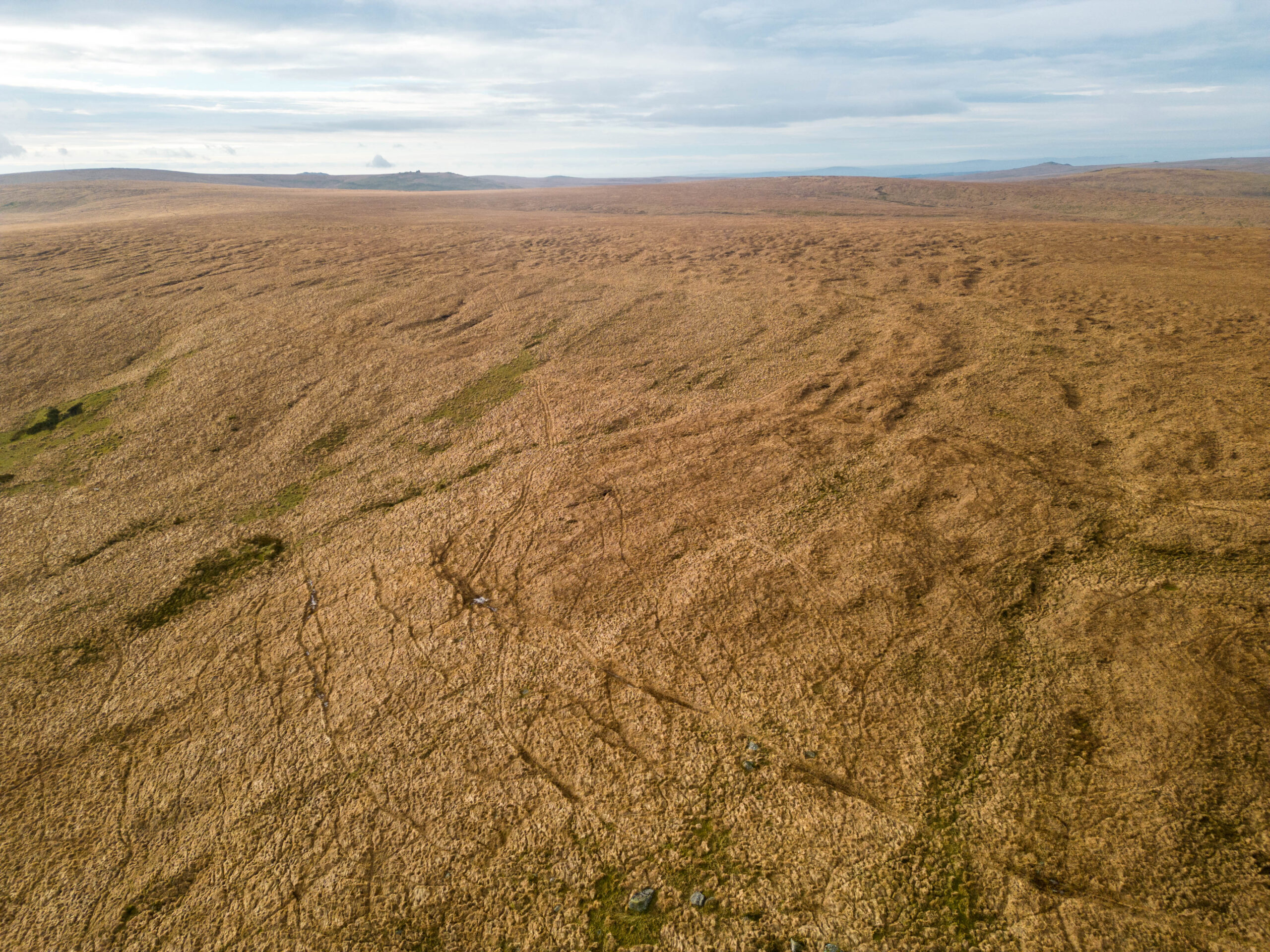
The path continues uphill, into fog. I pass an Army observation post and see the rocky outcrops of East Mill Tor. The path drops into marshy terrain, and fords the young River Taw as it gathers strength from the sodden hills on either side. We are in the Dartmoor Firing Area, used by the military. But not today, fortunately. There are no more groups of teenagers this far out. In fact, there is no one around.
Mythic Imagination
Jung and Eliade, among others, excavated down into the psyche and found the pattern of story running through our lives, our rituals, our dreams and our religions like the words in a stick of rock. However deep you go, it is always there. Your life is a mythical story, if you look at it in the right way, full of the same turning points, doubts, monsters and unlooked-for help as in any classical myth or Marvel comic.
At some point, at least once in life, you’ll be asked to take up arms, to set off into the unknown and confront the monster that terrifies you.
Hughes’ fox-man was his spirit guide calling him to a shamanic life, and as a good student of Eliade, he knew that shamanism and language were inter-woven.
Hughes’ first mentor was TS Eliot, a poetic hero of his and now editor of Faber & Faber. Eliot was a convinced Anglo-Catholic convert, and his masterpiece Four Quartets was an attempt to reconcile our time-bound and limited existence with the ineffable and eternal mysteries of God. Hughes was by no means religious in this sense, but he could see parallels between his own spiritual-poetic journey and Eliot’s: both were no less committed to a kind of mediation with the sacred, however one perceives it.
Hughes believed that the Judeo-Christian account of creation had created a fracture between humanity and the natural world. Over time, this gulf had grown, until it reached a crisis in modernity. Most moderns live their lives completely unaware of the cycles and patterns of the world around them.
His collection from 1967, Wodwo, is named after the mythological wild man of the woods, the half-way house between the realms of man and faerie.
In today’s age of “toxic masculinity”, the concept of the wild man – the semi-savage masculine aspect – is more than ever something to be feared. But, as Hughes knew, burying things does not make them go away. Authors like Robert Bly (Iron John: A Book About Men) argue that for men to truly heal and become what they could be, they need to make some contact with the Wodwo within.
Wodwo does not know who or what he is, but he is animated with a relentless hunger to know:
…I seem
separate from the ground and not rooted but dropped out of nothing casually I’ve no threads fastening me to anything I can go anywhere
I seem to have been given the freedom of this place what am I then?
This insatiable curiosity and desire to experience recalls the questing consciousness of the Jungian vision of the psyche: our need to unify opposites and resolve contradictions. If we as modern men and women are alert to the nature of this quest in front of us, we will be able to see the meaning in our lives. But we are never taught to look at things in this way.
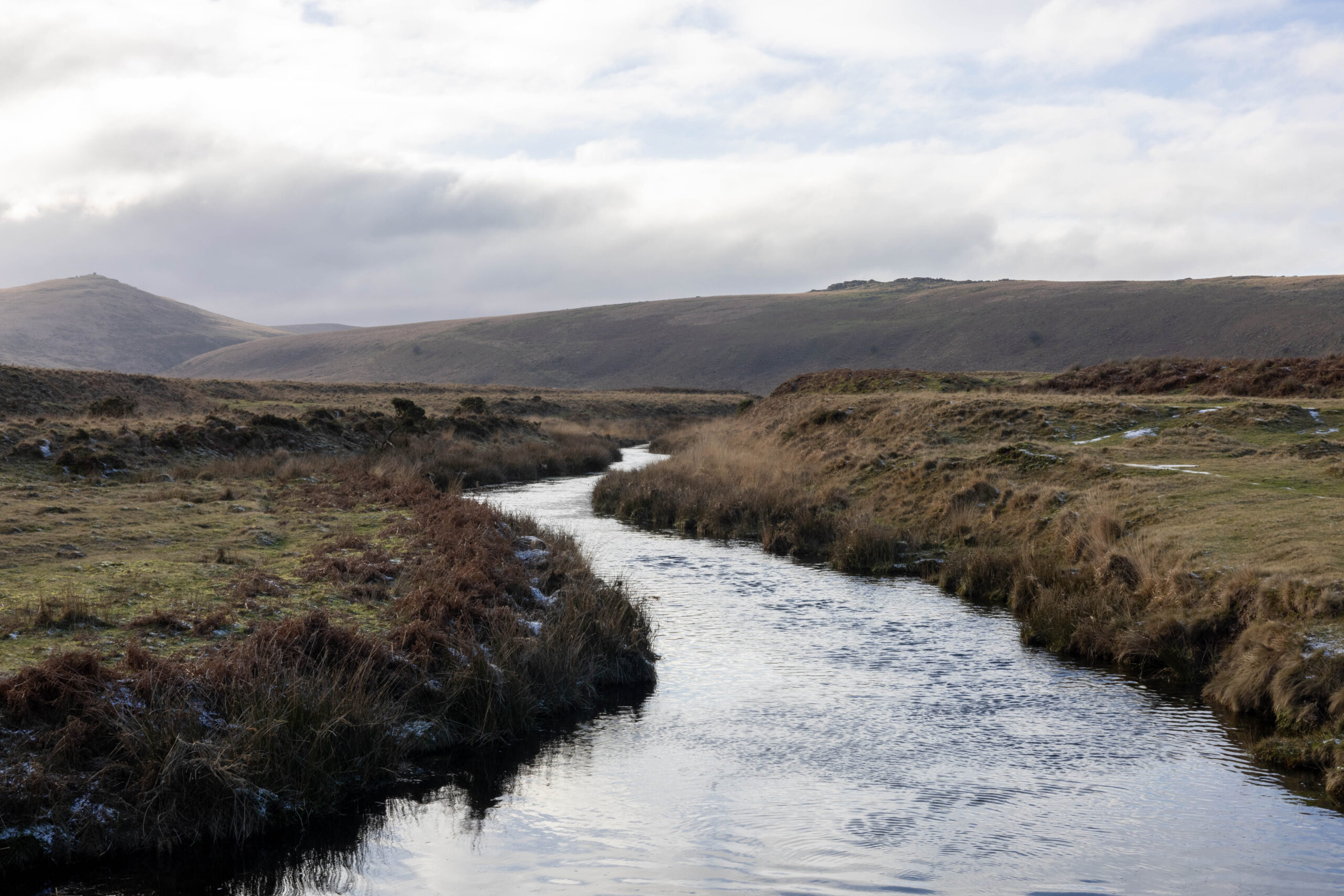
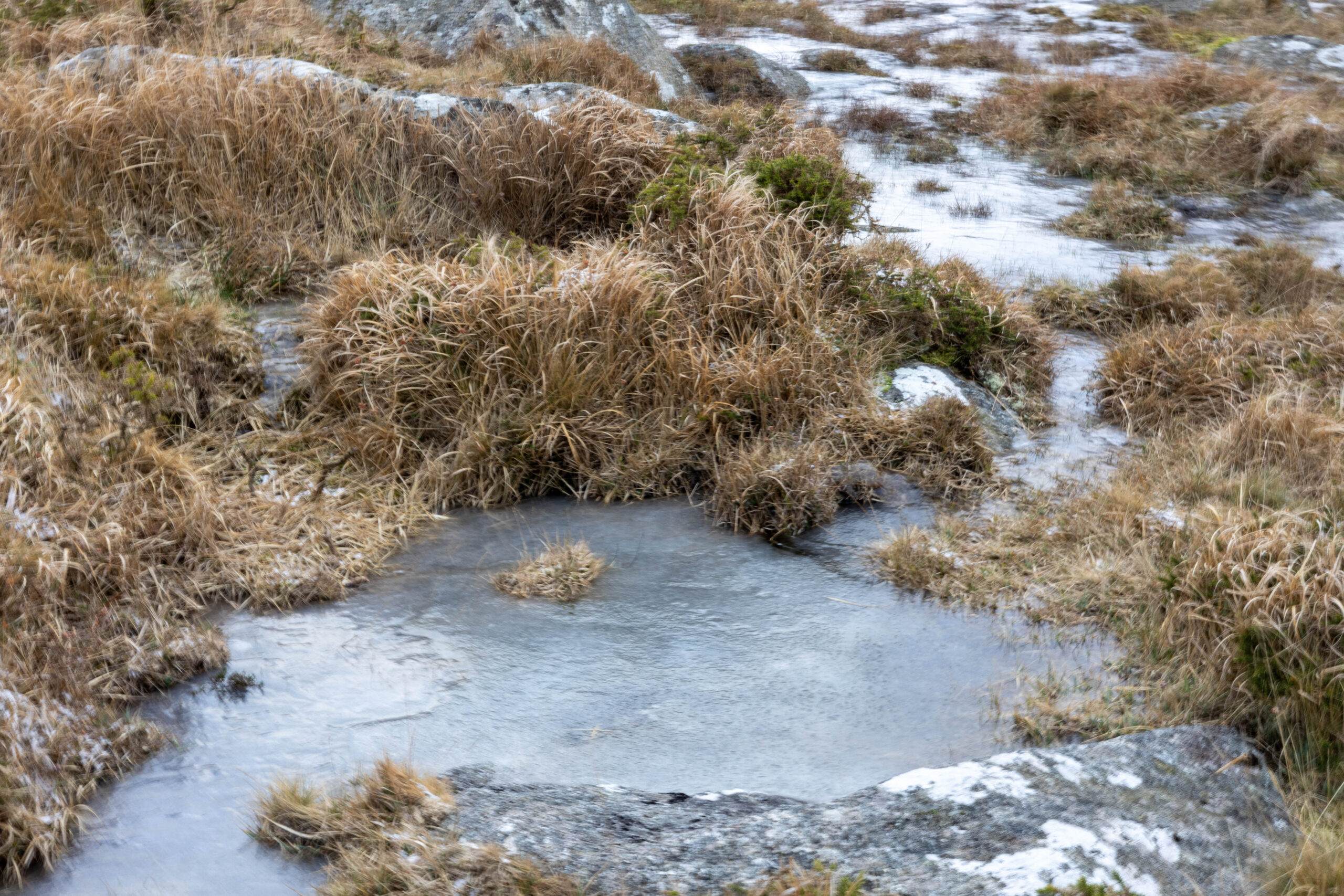
The path is now sometimes flooded, and the water to the sides of it teems with life. Striding out in any direction from the path would see your boots sinking below the surface in black, wet slime. The maps show marshy terrain all around, and the “heads” of various rivers emerging from the spongy ground: the West Okement, the East Dart, the Taw.
Water
Water is deep, contains mysteries we don’t understand and treasures for us to find. But we can’t stay down there very long. It comprises the largest part of our world, but it is for the most part a mystery what goes on down in the depths. Almost every description you can make of water, you end up describing your own unconscious mind.
Hughes was a fisherman, both in the sense of the waking-world, and metaphorically. One of his most studied poems is Pike, ostensibly about the famously violent freshwater fish, and at the same time a rumination on those grinning demonic forces that lurk below the peaceful surfaces of our imaginations.
He describes the fish:
Pike, three inches long, perfect
Pike in all parts, green tigering the gold.
Killers from the egg: the malevolent aged grin.
And a memory, and the sense that this memory reaches down into the subconscious depths, stirring something monstrous and god-like in the deep:
A pond I fished, fifty yards across,
Whose lilies and muscular tench
Had outlasted every visible stone
Of the monastery that planted them –
Stilled legendary depth: it was as deep as England. It held
Pike too immense to stir, so immense and old
That past nightfall I dared not cast
But silently cast and fished
With the hair frozen on my head
For what might move, for what eye might move.
The still splashes on the dark pond
Owls hushing the floating woods
Frail on my ear against the dream
Darkness beneath darkness had freed
That rose slowly towards me, watching.
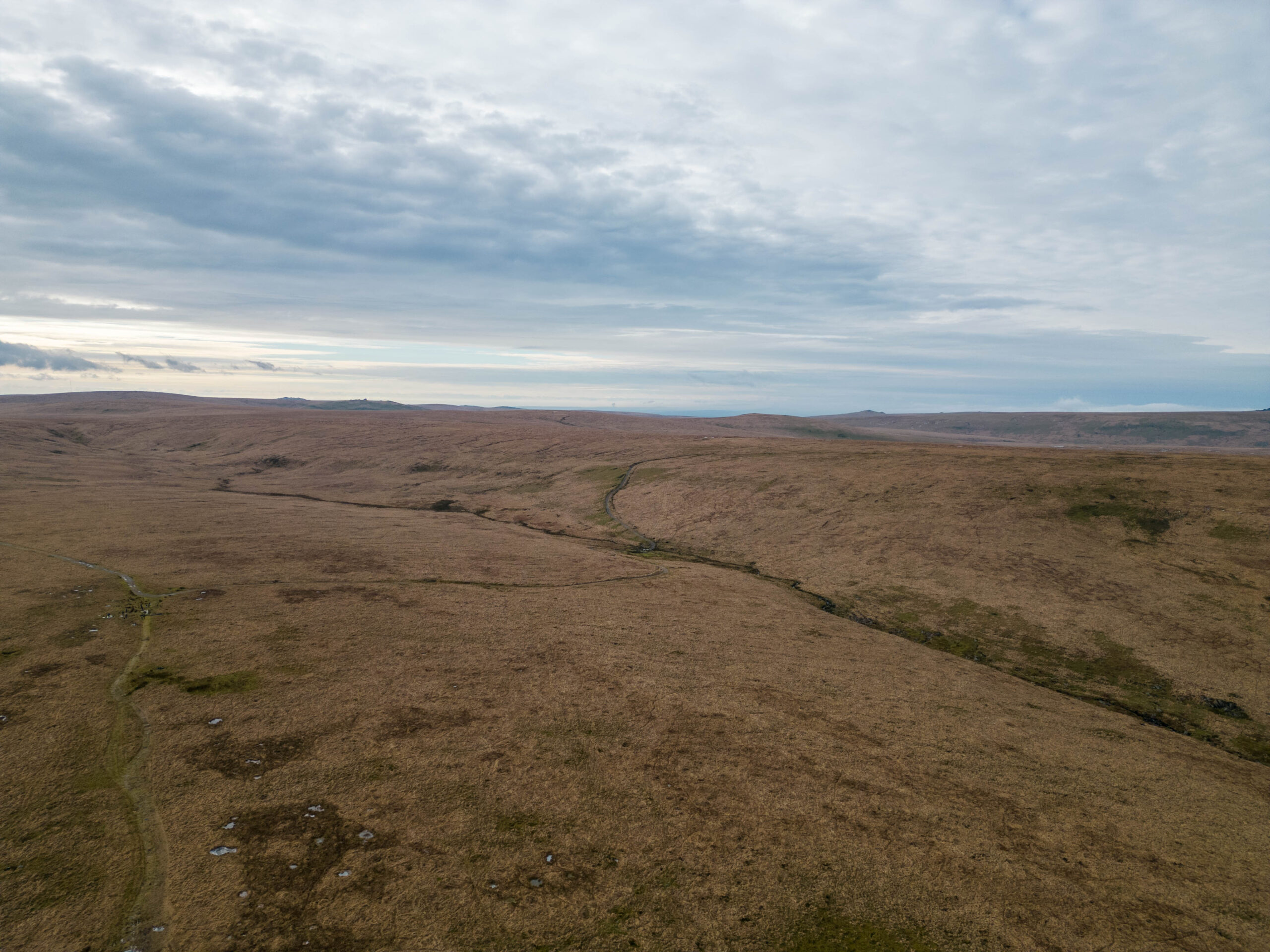
The last landmarks and signs of human activity are out of sight. Now it’s a 360 panorama of moorland, and there’s still not a soul to be seen, and hasn’t been for at least two hours. Reeds in the valleys show that there is marsh here. Out of this morass comes the raw material of the North Devon rivers. It’s a good idea to follow the paths. The place may look barren, but everywhere here is teeming with life. You have to stop to notice it, but when you have seen it you can’t unsee it. Even now, this early in the year, insects flit about. Birds whirl overhead.
Crow
Most consider Hughes’ masterpiece to be “Crow: From the Life and Songs of the Crow”. Crow is, Hughes said, the true emblem of the country: “the bird of Bran.. the oldest and highest totem creature of Britain.. England pretends to a lion but that is a late, fake, import.. Whatever colour of Englishman you scratch, you come to some sort of crow”. In his imagination, Crow became an indestructible and irrepressible force of nature.
Crow is created from “God’s nightmare”, and the sequence of poems offers a creation myth in parallel to the one presented by Christianity, with a humour and spirit as black as the namesake creature.
Crow is a trickster God, and like all the trickster Gods he can say the unsayable, blaspheme with impunity and laugh at taboos. He is not evil, as such. He is the Jungian shadow of our received notions of divinity.
In the poem A Childish Prank, for example, God – having created Adam and Eve – was pondering the question of how to animate them with souls. While he was sleeping on it, Crow solved the issue by creating the sexual urge, which has both confounded and inspired humanity ever since:
Man’s and woman’s bodies lay without souls,
Dully gaping, foolishly staring, inert
On the flowers of Eden.
God pondered.
The problem was so great, it dragged him asleep.
Crow laughed.
He bit the Worm, God’s only son,
Into two writhing halves.
He stuffed into man the tail half
With the wounded end hanging out.
He stuffed the head half headfirst into woman
And it crept in deeper and up
To peer out through her eyes
Calling its tail-half to join up quickly, quickly
Because O it was painful.
Man awoke being dragged across the grass.
Woman awoke to see him coming.
Neither knew what had happened.
God went on sleeping.
Crow went on laughing.
Hughes first imagined the Crow collection to be part of a longer story-arc, which he never got around to finishing. His writing went on in other directions without returning to the character, but the stark descriptive style and the wry and dispassionate way of looking at the brutal realities of life remained a feature of his work.
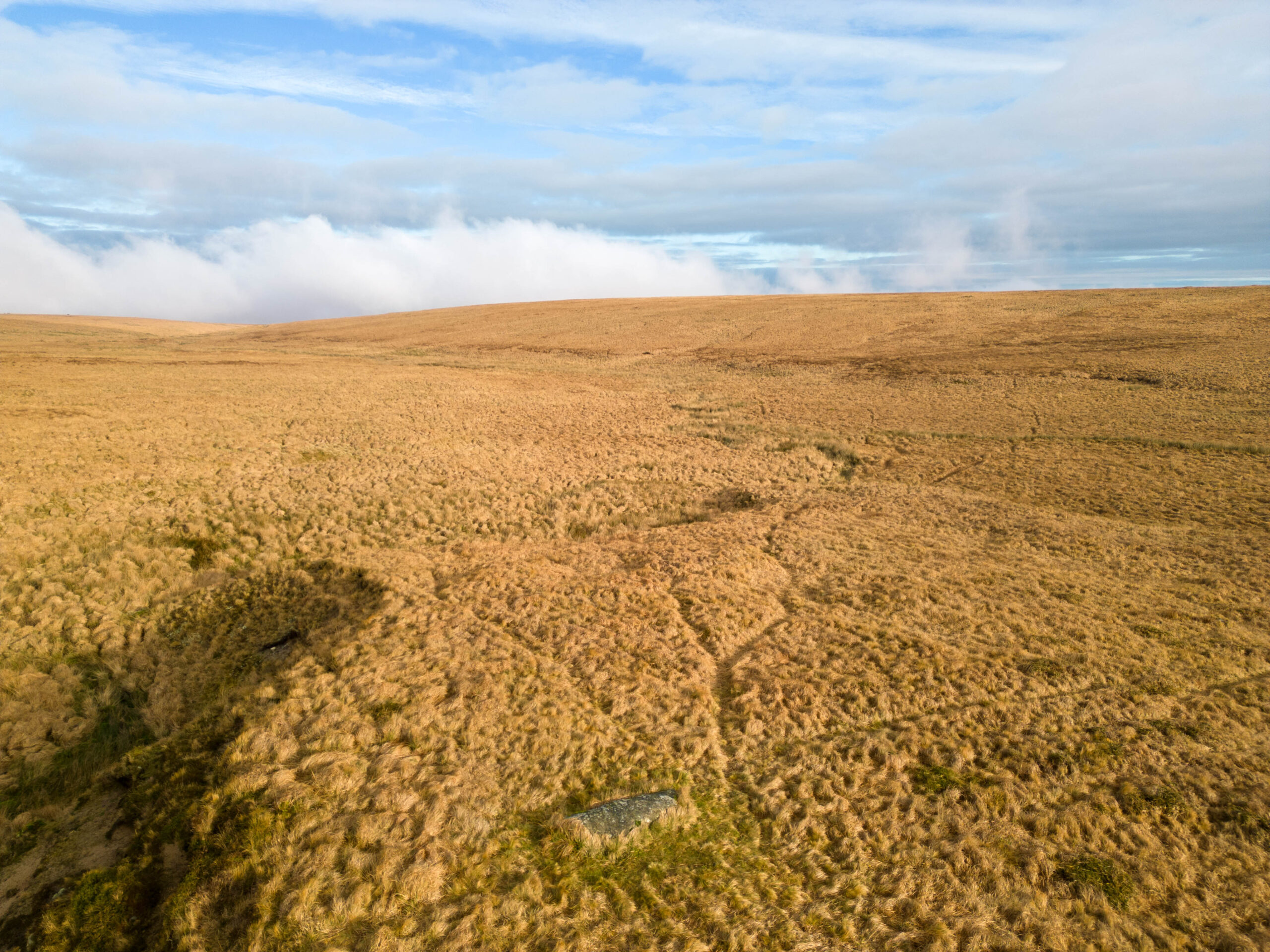
At last, I’ve got as close as I can to the stone using any track. I have to set out across open marshland. There are almost no features here, so it’s hard to know which way to go. The stone isn’t visible from here. Hundreds of metres away, there is a raised plateau which I assume to be the place. I stumble, trip and curse through tufts of reeds, marshy pools full of slime and treacherous ankle-snapping gaps between the rocks hidden under the grass. If it weren’t for the recent freeze, which makes the sphagnum moss hard and crackling underfoot, I would surely by knee-deep in mud. Finally I see it: a smooth-shaped hunk of granite, covered in lichen, and etched with the simple inscription: TED HUGHES OM 1930 – 1998.
A sense of place
Today the connection between people and the places that they live on is more frayed than ever. It is this connection, though, that imbues the land with its magic and power. Without this connection, a sense of being part of some larger story, we might as well be anywhere. Or nowhere. Hughes understood this, and perhaps saw this lack of connection as being the reason for the slow deterioration of the natural world, with its birds, beasts, fish and spirit animals being driven out and replaced by a monoculture.
For all the drama it caused at the time, it is right that the stone be here, at the source of the River Taw that Hughes loved so much and campaigned to protect. The river is cleaner now than it was in his lifetime. Otters have reclaimed the water that they were once driven from. Not every battle against the forces of modernity is in vain.
One of the great Ted Hughes poems for pondering the mystery of life – its brief duration, its moments of grandeur and its slow decay – is the poem An October Salmon.
The narrator notices an old salmon in a polluted pool. It is near death:
He’s lying in poor water, a yard or so depth of poor safety.
Maybe only two feet under the no-protection of an outleaning small oak,
Half under a tangle of brambles.
After his two thousand miles, he rests,
Breathing in that lap of easy current
In his graveyard pool.
This salmon, in its lifecycle, swam down the river and out into the sea. Sleek and majestic, he escaped from this small pond into the wide ocean, in his element, in his prime. Then, some instinct brought him battling against the river’s current to return here, where he emerged from the egg, in a small, polluted pool. His body is now falling apart, just a few years old.
And that is how it is.
That is what is going on there, under the scrubby oak tree, hour after hour.
That is what the splendour of the sea has come down to,
And the eye of ravenous joy – king of infinite liberty
In the flashing expanse, the bloom of sea-life,
On the surge-ride of elation, weightless,
Body simply the armature of energy
In that earliest sea-freedom, the savage amazement of life,
The salt mouthful of actual existence,
With strength like light
However gloriously – or not – we may confront the shortness of life, whatever we do with the few chances we get to fulfill all of our potential, our destiny is clear:
Yet this was always with him. This was inscribed in his egg.
This chamber of horrors is also home.
He was probably hatched in this very pool.
And this was the only mother he ever had, this uneasy channel of minnows
Under the mill-wall, with bicycle wheels, car-tyres, bottles
And sunk sheets of corrugated iron.
Ted Hughes was not a man who would fit easily into the modern era. The world has changed a lot since 1998. He was a man of his time, for all that he tried to step out of time and into the mythos of the country he loved. One of the things that dates him is his unflinching gaze when looking at death as part of life.
However much we try to banish the shadows at the back of our minds, death and suffering will always be there. We should try to maintain, like the salmon:
The epic poise
That holds him so steady in his wounds, so loyal to his doom, so patient
In the machinery of heaven.
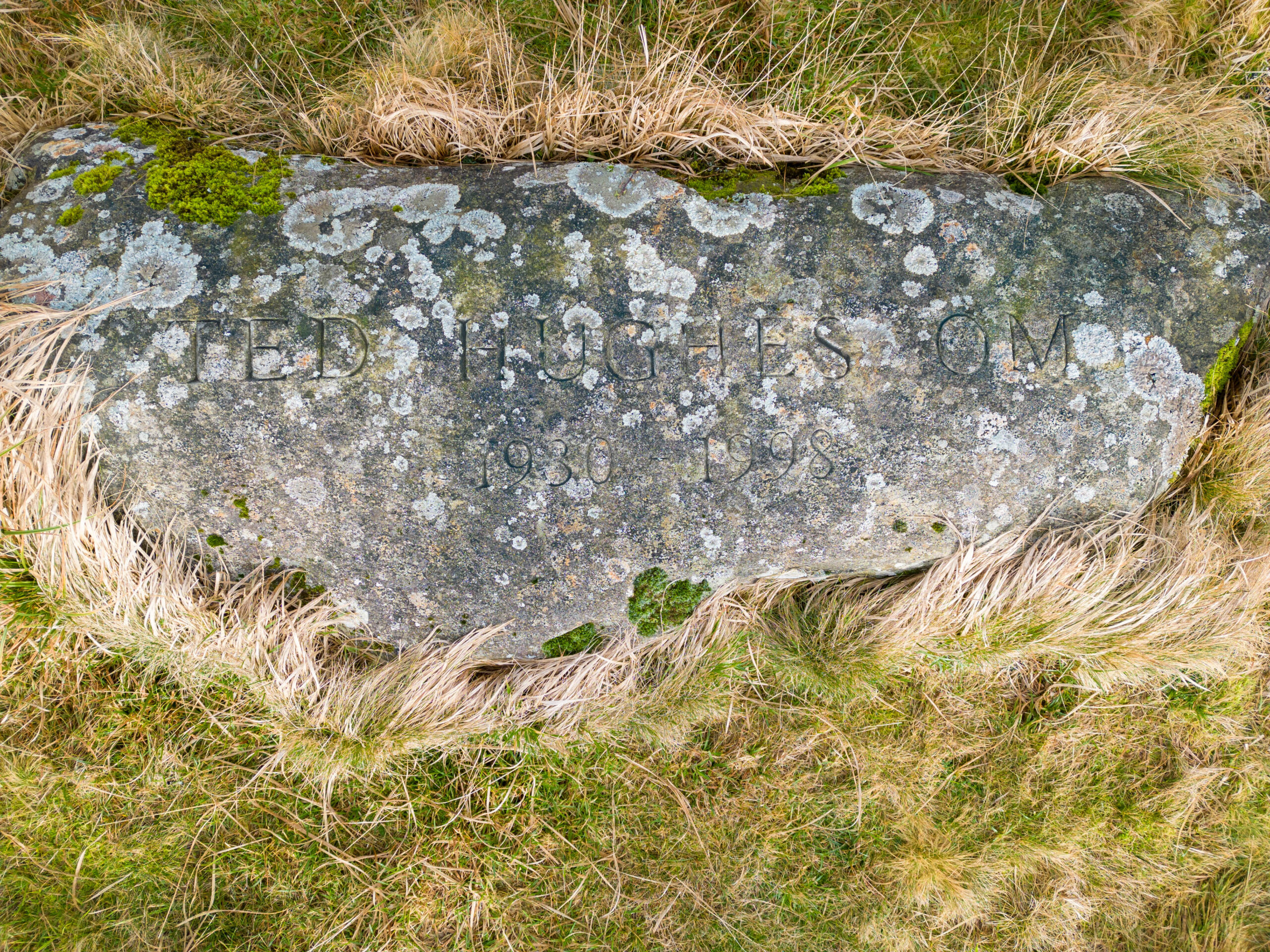
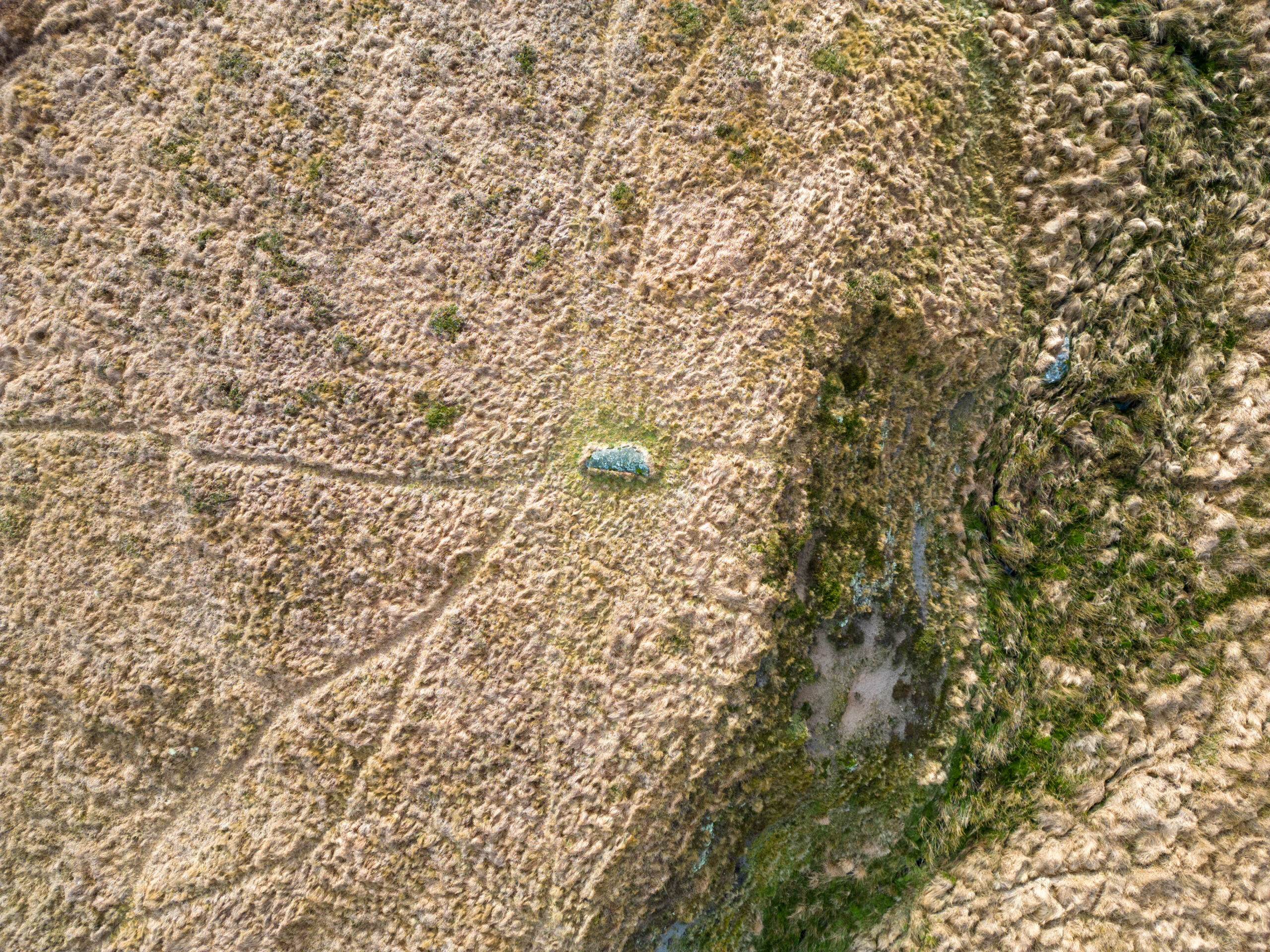
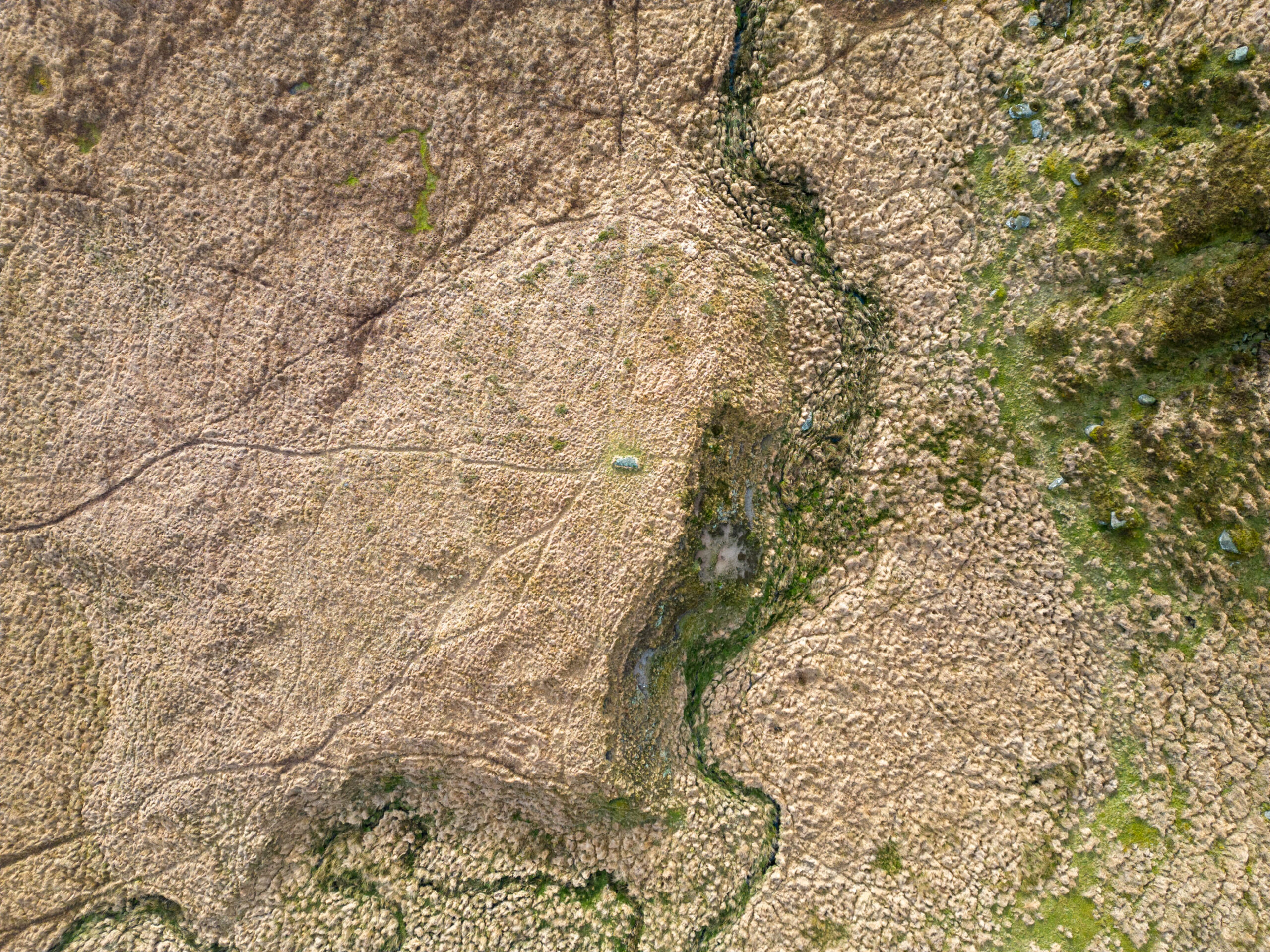
It was a long walk to get here. I sit down on Hughes’ stone, take out my thermos and some cheese and pickle sandwiches. Immediately, despite the chill air, I am swarmed by flying insects. I stand up, flail about, trying to create some personal space, tripping over the clumps of grass. Ted Hughes would not be surprised if a Crow had happened to witness the ridiculous spectacle, and laughed a cawing laugh across the empty moorland.
So let’s just say that there was, and that it did.
Other Noteworthy Places…
Brent Tor Church – St Michael de Rupe
On the western edge of Dartmoor, an ancient church sits atop a plug of basalt, with commanding views over West Devon and Cornwall…
Merrivale Complex
The Merrivale Complex of stone rows, cists and stone circles is easy to find on Dartmoor – a must-see if you’re interested in ancient stones!
Ringmoor & Brisworthy Stone Circles
On the southern edge of Dartmoor you can find Brisworthy Stone circle – a beautiful circle in wonderful surroundings. A short hop away there’s also the Ringmoor Down circle and avenue.
